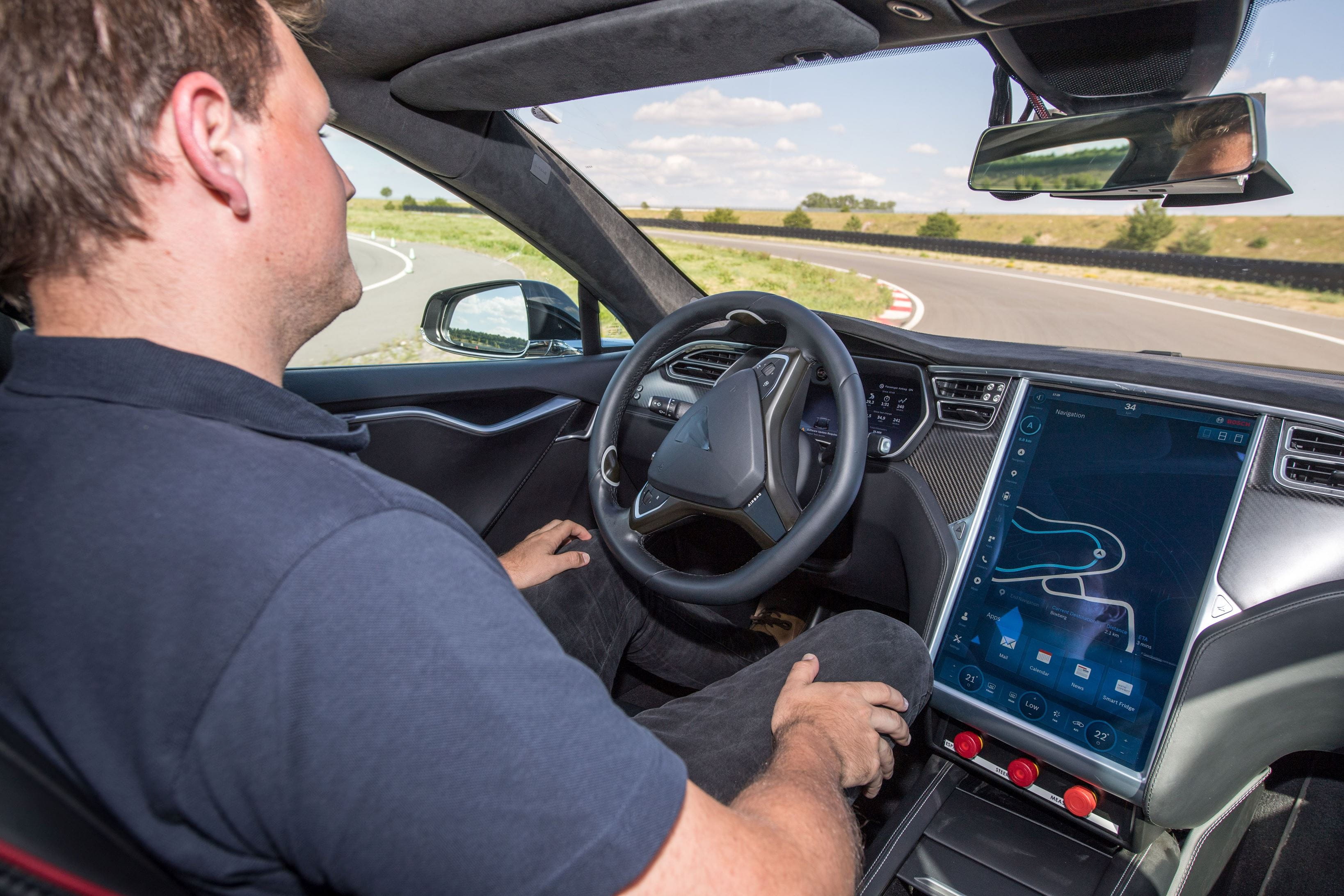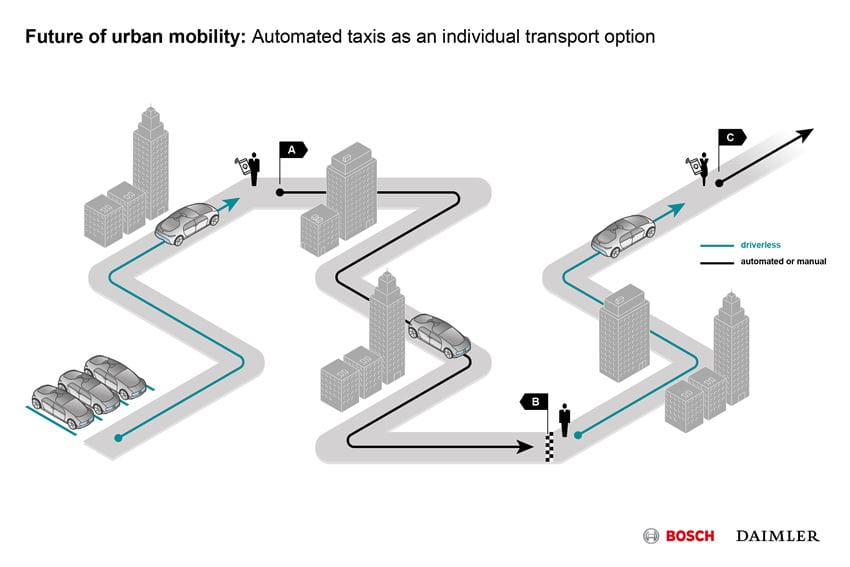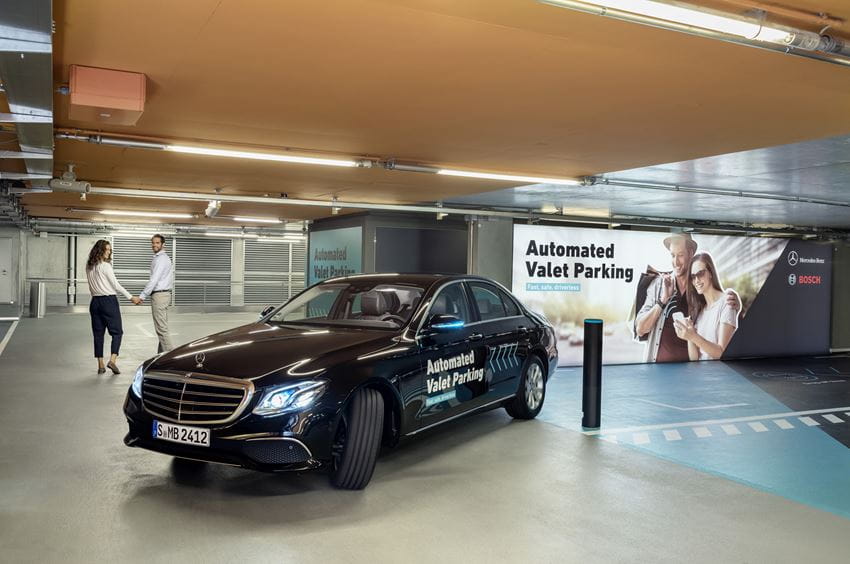Autonomous cars continue to appeal to our imagination. And although modern-day vehicles already have a lot of “emerging technology” on board, fully autonomous cars will not be available anytime soon. The technological road ahead is beset with challenges and difficulties, but Bosch is convinced that the day will come that the first fully autonomous car takes to the roads... although it probably won’t be tomorrow.
Bosch recently invited us to the Juvincourt test track in France to demonstrate the state of the art of autonomous driving technology. Bosch is a supplier of automotive technology to a large number of brands and this German technology giant is also at the forefront of the development of autonomous technology. As we discovered during the workshops in Juvincourt, automated driving has great consequences for all parts and aspects of a car, from the engine, the brakes and the steering system to the onboard instruments, navigation and sensors, and of course also the connection between the inside and outside of the car. The key to success lies in gaining a good understanding of all systems integrated into the vehicle. Bosch believes that these ingredients are absolutely essential:
Connected horizon
Self-driving cars use information about their surroundings that goes far beyond what is detected by the car’s sensors. They need real-time traffic data, for example, including information about traffic jams and accidents, which means that they have to be connected to a server. Bosch has developed the ‘connected environment’ to address this need: a system that can carry out a dynamic analysis of the car’s route and calculate any adjustments to the driving strategy. The connected horizon gives automated cars the ability to anticipate, which greatly increases comfort and safety during the trip. Connected cars are warned when they approach a danger zone, such as when navigating a bend or popping up from behind a hill, and can slow down earlier.
Electric steering
Safe electric power steering is one of the most important technologies required for autonomous driving. The integrated safety system allows the driver or the car to continue to remain in control of crucial driving functions, whilst retaining at least 50% of the electric power steering in the unlikely event of a malfunction.
ESC
Electronic Stability Control also has a key role to play during driving. If the car itself becomes responsible for the driving process, this comes with a number of highly specific requirements for its safety systems, such as the brakes. In order to guarantee maximum availability, even in the event of a malfunction, the system must feature a certain level of redundancy for safety reasons. Both ESC and iBooster, an electromechanical brake booster, are capable of slowing down the vehicle independently, without requiring any intervention on the part of the driver.
MMI
Automated driving implies a new way of operating a car, which means new MMI, or Man-Machine Interaction, concepts will be required. Drivers must be able to intuitively understand and use the system. The TFT instrument cluster, which combines maximal flexibility with regard to content processing with a clear display on onboard monitors, is a good example of this. Bosch displays information such as speed, navigation and warnings at eye height, in direct view of the driver. This information is projected onto the surroundings of the vehicle, as it were (approximately two meters in front of the car), giving the driver the sense of blending into the environment.
iBooster
The Bosch iBooster is a completely vacuum-independent electromechanical brake booster that meets all the requirements for a modern brake system. This system can be used with any type of engine and is particularly suitable for hybrid and electrical systems.
Maps
Without high-resolution, current maps, autonomous driving simply is not possible. These maps provide the car with information about changing traffic conditions that goes far beyond what the detection zone of the car’s onboard sensors are capable of. The radar and video sensors collect and share real-time traffic data, which are then used to create the required high-resolution maps.
Lidarsensors
In addition to radar, video and ultrasonic sensors, Bosch also equips its automated test vehicles with lidar sensors. Light Detection and Ranging (or Laser Imaging Detection and Ranging) is a technology that determines the distance to an object or surface by means of laser pulses. The various sensors complement each other perfectly and automated vehicles can reliably detect their surroundings and determine their driving strategy by combining the data these sensors collect.
Radar sensors
Radar sensors, one of the different types of sensors the cars are equipped with, provide relevant, 360-degree information about the car’s surroundings up to a distance of 250 meters. The main task of the radar sensors is to detect objects and to measure their speed and position relative to the moving vehicle.
Ultrasonic sensors
Automated cars use ultrasonic sensors to explore the immediate surroundings of the car (up to 6 meters), particularly at low speeds, such as during parking manoeuvres. These sensors work according to the sonar principle, which e.g. bats also use to navigate. They emit short ultrasonic signals, which then bounce off any obstacles. The echo signals are picked up by the sensors and analysed by a central computer.
Video sensor
Bosch’s stereo video camera has a range of 50 meters and provides important optical information about the car’s surroundings. The two highly sensitive image sensors provide high-resolution footage and are capable of processing high-contrast images. The stereo video camera detects objects and determines how far they are from the car while also identifying open space. The information provided by this sensor is combined with data collected by sensors operating according to different principles. Together they result in a model of the car’s surroundings, which can be used to determine a driving strategy.





